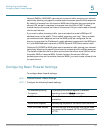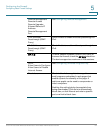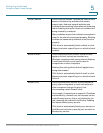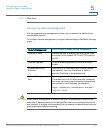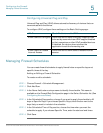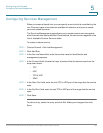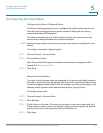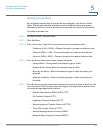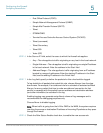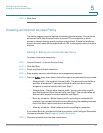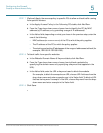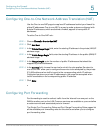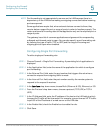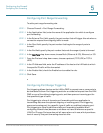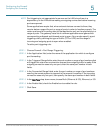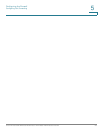
Configuring the Firewall
Configuring Access Rules
Cisco RV130/130W Wireless Multifunction VPN Router Administration Guide 91
5
• Post Office Protocol (POP3)
• Simple Network Management Protocol (SNMP)
• Simple Mail Transfer Protocol (SMTP)
• Te l n et
• STRMWORKS
• Terminal Access Controller Access-Control System (TACACS)
• Telnet (command)
• Te l n et S e c o n dar y
• Telnet SSL
• Voice (SIP)
STEP 6 In the Source IP field, select the users to which the firewall rule applies:
• Any—The rule applies to traffic originating on any host in the local network.
• Single Address—The rule applies to traffic originating on a single IP address
in the local network. Enter the address in the Start field.
• Address Range—The rule applies to traffic originating from an IP address
located in a range of addresses. Enter the starting IP address in the Start
field, and the ending IP address in the Finish field.
STEP 7 In the Log field, specify whether the packets for this rule should be logged.
To log details for all packets that match this rule, choose Always from the drop-
down menu. For example, if an outbound rule for a schedule is selected as Block
Always, for every packet that tries to make an outbound connection for that
service, a message with the packet's source address and destination address
(and other information) is recorded in the log.
Enabling logging may generate a significant volume of log messages and is
recommended for debugging purposes only.
Choose Never to disable logging.
Note: When traffic is going from the LAN or DMZ to the WAN, the system requires
rewriting the source or destination IP address of incoming IP packets as they pass
through the firewall.
STEP 8 Check the Rule Status Enable check box, to enable the new access rule.



